[FIX] CDpusersvc Failed to Read Description (Error Code 15100)
Some Windows users have discovered a service called CDpusersvc whose description contains an error code (Failed to Read Description – Error Code 15100). Since this service is most commonly discovered in Task Manager, naturally some users tried to disable it conventionally (from the Services screen), but found that they couldn’t – The parameter is the incorrect error appears.
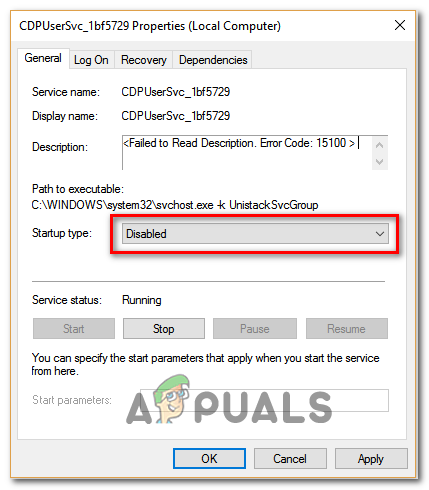
The CDPUserSvc service is a sub-component of the Connected Device Platform service and will only be used in scenarios where the user connects a Bluetooth device, a printer, a scanner, or other types of external devices. So if you are not using any devices in these categories, you can disable this service with no repercussions.
As it turns out, there are several different scenarios that might end up facilitating the apparition of the Failed to Read Description – Error Code 15100. Here’s a shortlist with every potential culprit:
- Outdated OS – As it turns out, Microsoft is already aware of this issue and has already released a hotfix treating this problem on Windows 7, Windows 8.1, and Windows 10. To take advantage of it, simply install every pending Windows update.
- CDpusersvc service is not isolated – Even though the vast majority of native Windows services are isolated, this process isn’t. In case this problem occurs due to the fact that the CDpusersvc process does NOT function as a standalone service, you can fix the issue by running a simple command in an elevated CMD prompt.
- Corrupted CDpusersvc service – System file corruption can also be responsible for the apparition of this error code. If this scenario is applicable, you should run DISM and SFC scans to see if your operating system is capable of fixing the issue applicable. Else, consider disabling the service via Registry Editor (if you don’t have any connected devices that make use of it).
- Permission issue with Microsoft Store – If you previously disabled it via a Group Policy (or some other way), it’s very likely that this produces a conflict that will ultimately result in the Failed to Read Description pop-up error. In this case, you will need to enable the auto-update function manually in order to stop new errors from appearing.
- Conflicting errant service – Another possible culprit is errant service tied to CDpusersvc containing a suffix that puts it above being touched by the changes you enforce on the Registry. In this case, you will need to create a manual script and use Task Scheduler to configure it to run at every system startup in order to clean every new instance.
Method 1: Installing every Pending Update
As it’s been confirmed by several Windows users that opened a ticket with Microsoft regarding this issue, it turns out that the tech giant has already released a hotfix for this issue (with update KB4048952). To take advantage of this, you simply need to install every pending update until you bring your computer build up to date.
This is applicable to both Windows 10 and older Windows versions.
Just install every pending update using the instructions below and restart your computer to see if the issue is resolved automatically:
- Open up a Run dialog box by pressing Windows key + R. Next, type ‘ms-settings:windowsupdate’ and press Enter to open up the Windows Update tab of the Settings app.

Opening the Windows Update screen Note: In case you’re using Windows 7 or Windows 8.1, use the ‘wuapp’ command instead.
- Once you’re inside the Windows Update screen, click on Check for Updates, then follow the on-screen prompts to install every Windows update that is currently waiting to be installed.
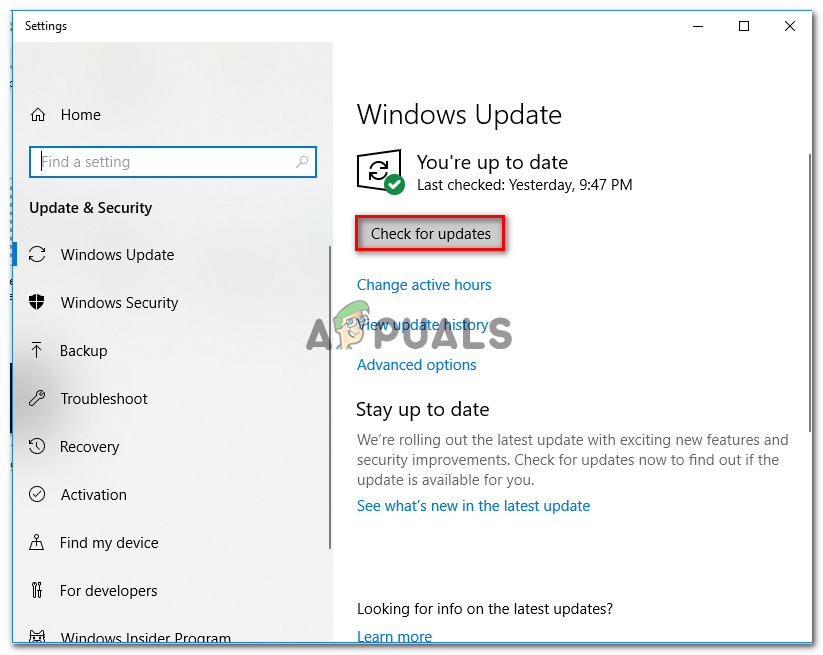
Installing every pending Windows update Note: Install every type of update, not just the ones labeled as Important or Critical.
- If you have a lot of pending updates, it’s likely that you will be forced to update before Windows will install every pending update. If this happens, do so but make sure to return to the same update screen and complete the installation of the remaining updates.
- Once every pending update is installed, restart your computer and see if the problem is now fixed.
In case your computer was already up to date or you are not willing to install the pending Windows updates (for various reasons), move down to the next potential fix below.
Method 2: Isolating the Process
In case you’re looking for a quick and painless fix (but one that doesn’t fix the root cause of the issue), you can simply open up an administrative command prompt and isolate the cdpusersvc process. This operation will force Windows to isolate the service in its own separate process.
Note: Keep in mind that process isolation is normally the default for the vast majority of processes, but for some reason, Microsoft opted to run this one in another mode by default.
If you want to give this process isolation fix a try, follow the instructions below:
- Press Windows key + R to open up a Run dialog box. Next, type ‘cmd‘ inside the text box and press Ctrl + Shift + Enter to open up an elevated CMD prompt.

Running the Command Prompt - Once you’re inside the elevated CMD prompt, type the following command and press Enter to isolate the cdpusersvc process:
sc config cdpusersvc type=own
- After you run the command successfully, close the elevated CMD prompt, and repeat the action that was previously triggering the error.
In case you’re still seeing the “Failed to Read Description – Error Code 15100″ issue, move down to the next potential fix below.
Method 3: Disabling the CDpusersvc via Registry Editor
If you are not using a device that uses the CDpusersvc service (printer, scanner, or other types of external device), the quickest and most efficient way of fixing the Failed to Read Description (Error Code 15100) issue is to simply disable it using Registry Editor.
A lot of affected users have reported that upon disabling this service, the stopped seeing that description that pointed towards a problem with the CDpusersvc service.
Important: If you have any connected printers, scanners or Bluetooth devices, disabling the CDpusersvc is NOT recommended since you might experience connectivity issues with external devices that make use of the Connected Device Platform service. In this case, skip this first method and move directly to the second one.
If you are prepared to go this route, follow the instructions below to disable the CDpusersvc service via Registry Editor:
- Press Windows key + R to open up a Run dialog box. Next, type ‘regedit’ inside the text box and hit Enter to open up Registry Editor. When you see the UAC (User Account Control) prompt, click Yes to grant admin access.

Opening the Registry Editor - Once you’re inside the Registry Editor, use the left-hand section to navigate to the following location:
Computer\HKEY_LOCAL_MACHINE\SYSTEM\CurrentControlSet\Services\CDPUserSvc
Note: You can either navigate there manually (using the left-hand menu) or you can paste the location directly into the navigation bar and press Enter to get there instantly.
- After you land into the correct location, move over to the right-hand section and double-click on the Start value.
- Inside the Edit screen of Start, set the Base to Hexadecimal and set the Value data to 4 (Disabled) before clicking on Ok.
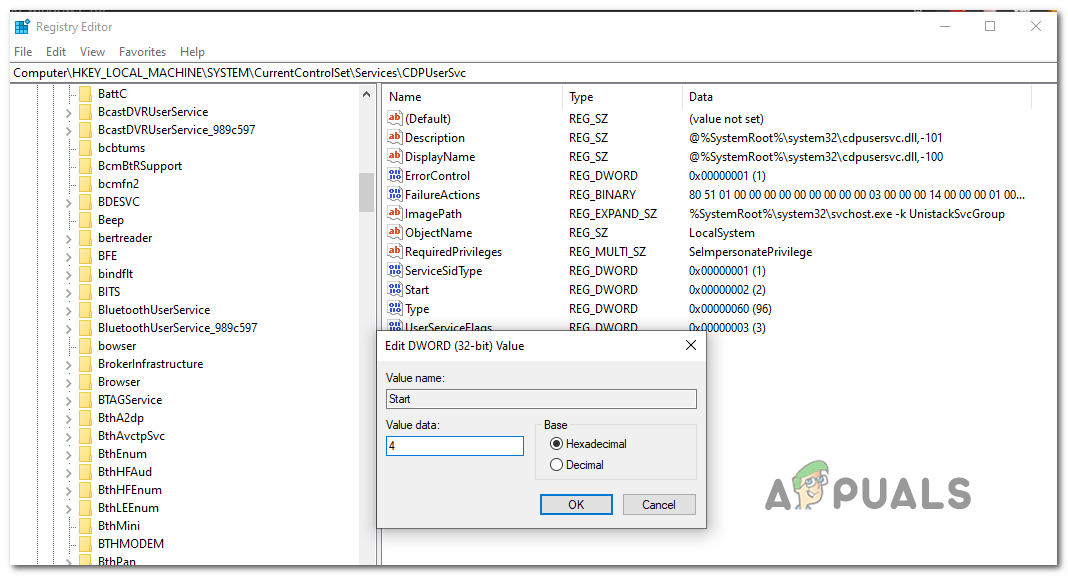
Modifying the Start key - Close the Registry Editor and restart your computer in order to allow your OS to enforce the changes that you just did.
- Return to the Properties screen of the CDpusersvc service and see if the problem is now fixed.
In case the problem is still occurring or you don’t want to disable this service altogether, move down to the next potential fix below.
Method 4: Performing SFC and DISM scans
As it turns out, this problem can also occur due to an underlying system file corruption. It seems like there are three problematic updates on Windows 10 that might end up breaking the CDpusersvc service.
Fortunately, every recent Windows version has a couple of built-in tools that are capable of fixing the majority of corrupted system files automatically.
SFC (System File Checker) and DISM (Deployment and Image Services and Deployment) are similar in some ways, but they operate differently which makes them ideal to be used together – That’s why we encourage you to run both in quick succession.
Start with an SFC scan, since it’s an entirely local tool that uses an archive stored on the OS drive to replace corrupted files with healthy equivalents. Run it and wait until the operation is complete.
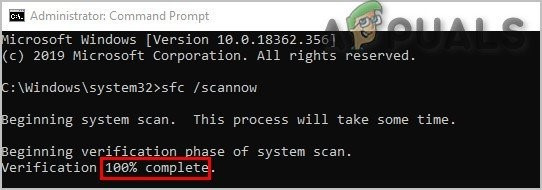
Note: DO NOT interrupt this scan until the operation is complete. Doing this might leave your system exposed to additional logical errors that cannot be fixed conventionally.
Once the operation is complete, restart your computer and wait for the next startup to complete. After your computer boots back up, trigger a DISM scan, and wait patiently until the scan and deployment phases are finished.
After the second operation is finished, reboot your computer once again and see if the Failed to Read Description – Error Code 15100 issue is fixed once the next computer startup is complete.
Method 5: Fixing the App Store Permission issues (if applicable)
As it’s been documented by several affected users, the CDpusersvc will also start “svchost -k UnistackSvcGroup” – this is a service that’s tasked with performing automatic updates for the Microsoft App Store.
However, if you are not a fan of the Microsoft store and you previously disabled it via a Group Policy (or some other way), it’s very likely that this produces a conflict that will ultimately result in the Failed to Read Description pop-up error.
If this scenario is applicable, you will need to disable access to the Microsoft Store and disable Automatic Updates from within the app so the CDpusersvc knows about this change.
To do this, simply open the Microsoft App Store, click on the action button from the top-right corner and click on Settings from the newly appeared context menu. Next, from the context menu, uncheck the toggle associated with Update apps automatically.

However, in the event that you already have a group policy in place that disables the Microsoft App store, you will need to begin by lifting that policy or by doing a series of adjustments in your Registry using Registry Editor.
If your particular situation forces you to do this, follow the instructions below:
- Press Windows key + R to open up a Run dialog box. Next, type ‘regedit’ inside the text box and press Enter to open up the Registry Editor tool.

Running the Registry Editor Note: When you are prompted by the UAC (User Account Control), click Yes to grant admin access.
- Once you’re inside the Registry Editor, use the left-section of this utility to navigate to the following location:
HKEY_LOCAL_MACHINE\SYSTEM\CurrentControlSet\Services\CDPUserSvc
- When you get to this location, right-click on a free space and choose New > Dword (32-bit) Value from the context menu.

Creating a New Dword (32-bit) value - Name the newly created value to 0x00000004, then double-click on it and set the Base to Hexadecimal and the Value data to 1.
- Close Registry Editor and restart your computer to enforce the changes that you just made.
In case the same Failed to Read Description (Error Code 15100) error is still occurring, move down to the next potential fix below.
Method 6: Deleting every Errant Service via Batch script
If none of the methods above have worked for you, it’s possible that the errant service (tied to CDpusersvc) contains a suffix that puts it above being touched by the changes you made via Registry Editor.
In this case, the only way to fix this issue is to build yourself a ‘search and destroy’ script and configure it to run at every startup – This is important since the suffix will change after every system startup.
If this scenario is applicable and none of the instructions above have worked for you, follow the instructions below to create and configure a script that will resolve this issue:
- First, we need to start by creating a batch script that we will then configure to run at every system startup. To do this, start by pressing Windows key + R to open up a Run box. Next, type ‘notepad.exe’ inside the text box and press Ctrl + Shift + Enter to open up an elevated Notepad window.
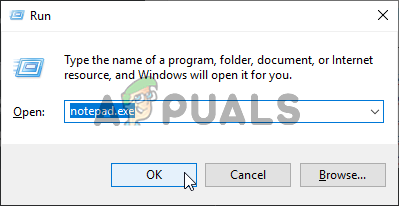
Opening Notepad with admin access Note: If you are prompted by the UAC (User Account Control) prompt, click Yes to grant admin access.
- Inside the newly opened Notepad window, paste the following code:
@ECHO OFF SC QUERY state= all>servicesdump.txt FINDSTR /L /C:"SERVICE_NAME: CDPUserSvc_" servicesdump.txt >CDPservice.txt FOR /F "usebackq tokens=2" %%i IN (CDPservice.txt) DO SET CDPUserSvc=%%i NET Stop "%CDPUserSvc%" SC Delete "%CDPUserSvc%" DEL CDPservice.txt DEL servicesdump.txt
- Next, click on File (from the ribbon at the top) and click on Save As…

Saving the script as a batch file - Name the script something recognizable, place in a location that’s easily accessible and ensure that you change the extension to .bat before clicking on Save.

Creating the .bat script - Now that the script is successfully created, press Windows key + R to open up a Run dialog box. Next, type ‘taskschd.msc’ and hit Enter to open up the Task Scheduler utility.
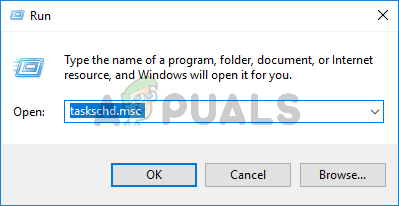
Type taskschd.msc in the Run to open Task Scheduler - Once you’re inside Task Scheduler, click on Action (from the ribbon bar at the top), then click on Create Task… from the newly appeared context menu.
- When you’re inside the Create Task Menu, select the General tab and start by setting a name for your future startup key. Then, ensure that the box associated with Run with highest privileges is checked and set the drop-down menu next to Configure for your particular Windows version.

Defining the new task - Next, select the Trigger tab from the top of the screen. Once you’re inside, click on New and change the drop-down menu associated with Begin the task to At Startup and ensure that the checkbox associated with Enabled (at the bottom) is checked.

Defining the Trigger of the startup event - Next, select the Actions tab and click on Next. From the New Action screen, set the Action drop-down menu to Start a program. Next, move to the Settings section and click the Browse button and select the .bat file you previously created at step 2 and 3. Once the proper script is selected, click on Ok to save the changes.
- Once you reach this step, the Startup Task is configured and ready to be deployed automatically at every system startup. Now all that’s left to do is click on Ok and restart your computer to resolve the issue.




